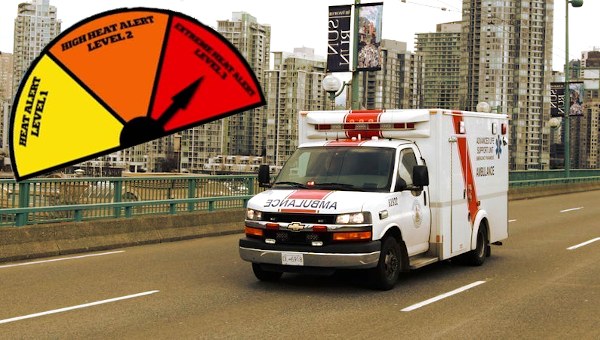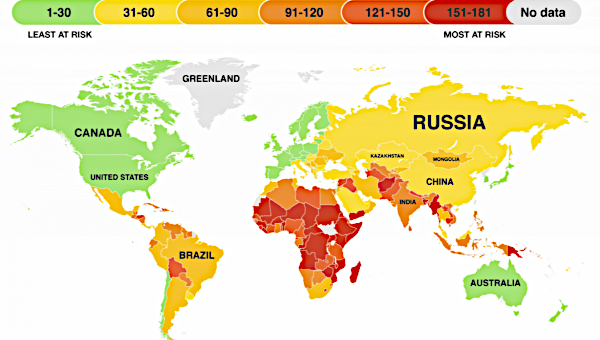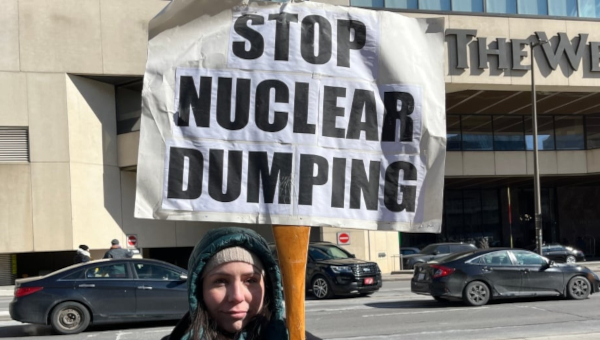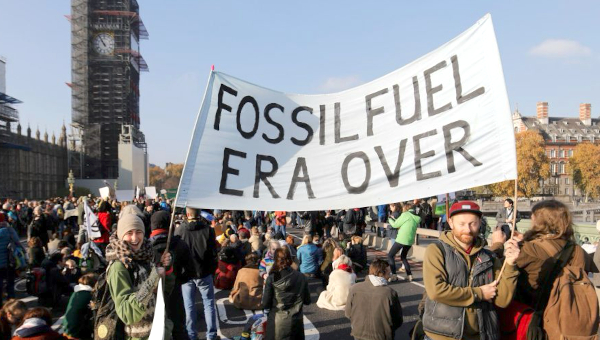“Fatalities are Part of Life” in a Capitalist Climate Emergency
Avoidable deaths of capitalism. Lives ended prematurely through policy or the pursuit of profit. In his wide-ranging analysis of working class life in Victorian England, The Condition of the Working Class in England, Friedrich Engels makes use of a term from labour circles of the day – social murder – to name the processes by which the day-to-day dynamics of capitalism kill working class people. In his words, “the class which at present holds social and political control [capital, the bourgeoisie] places hundreds of proletarians in such a position that they inevitably meet a too early and an unnatural death.” Unlike the street crimes of the poor, which are severely punished by criminal justice systems, social murder is carried out by economic and political powerholders against the exploited. And these social murders are not punished; they are licensed and legitimized operations of capitalism.
Engels explains social murder as follows:
“When one individual inflicts bodily injury upon another such that death results, we call the deed manslaughter; when the assailant knew in advance that the injury would be fatal, we call his deed murder. But when society places hundreds of proletarians in such a position that they inevitably meet a too early and an unnatural death, one which is quite as much a death by violence as that by the sword or bullet; when it deprives thousands of the necessaries of life, places them under conditions in which they cannot live – forces them, through the strong arm of the law, to remain in such conditions until that death ensues which is the inevitable consequence – knows that these thousands of victims must perish, and yet permits these conditions to remain, its deed is murder just as surely as the deed of the single individual; disguised, malicious murder, murder against which none can defend himself, which does not seem what it is, because no man sees the murderer, because the death of the victim seems a natural one, since the offence is more one of omission than of commission. But murder it remains.”
Community organizers have revived the notion of social murder with regard to the actions or inactions of governments in creating or maintaining the conditions that end in what are otherwise avoidable deaths of working-class people. Examples include both actively harmful social policies – like drug prohibition and criminalization of sex work – and policy failures such as lack of essential services like proper long-term care resources, for example.
Over a few weeks in June and July 2021, capitalist climate crisis and government failures came together to leave hundreds of people dead in British Columbia. A climate emergency heat dome over much of southern and central British Columbia showed at high cost the intersection of capital-created crises (a climate change extreme heat event) and the cruelty of government practice, resulting in potentially hundreds of avoidable deaths and the annihilation of an entire village along with ecological catastrophe. These might be called acts of social murder.

Social Murder
In the 2018 academic article, “Violent Proletarianisation: Social Murder, the Reserve Army of Labour and Social Security ‘Austerity’ in Britain,” sociologist Chris Glover uses the notion of social murder to explain the impacts of austerity on social services and the avoidable deaths of the poorest working class people. Glover identifies austerity, especially cuts to necessary social services, as forms of structural violence. This violence is built into, and comes to be accepted by, society and entrenches inequality and injustice even more deeply in social structures. The violence of austerity causes working class people to suffer great harm to their physical and mental wellbeing, such that it can be said that they were “socially murdered.”
Among the examples of austerity leading to personal and social harm Glover highlights “increasing numbers of homeless people dying on the streets or in hostels.” These avoidable deaths of unhoused and precariously housed people are something that occurred during the heat dome in British Columbia where disproportionate numbers of people who lived alone in inadequately ventilated care facilities or single-room occupancy hotels died.
Closer to home, socialist health researcher Dennis Raphael uses the idea of social murder to explain the great discrepancy in deaths according to class in Canada. He points out Statistics Canada’s reports of how Canadian men in the lowest 20 per cent of income distribution are 67 per cent more likely to die than the wealthiest 20 per cent in any given year. The figure is 52 per cent more likely for women. Men and women who are poor are 231 per cent and 211 per cent more likely to die of respiratory disease and 67 per cent and 53 per cent more likely to die of heart disease than wealthier people. According to Raphael: “Statistics Canada also makes clear that these differences in health outcomes are primarily due to the material living circumstances and the associated psychosocial stresses associated with not being as well off as the wealthiest 20 per cent of Canadians.” Access to relevant material resources, such as better quality food and shelter are crucial.
Social Murder in the Heat Dome
In under one week, between June 25 and July 1, a shocking 777 sudden deaths were reported in British Columbia. This number was triple what would usually be recorded in the province. In recent years, sudden deaths over the same time period ranged from 179 in 2016 to 232 in 2020. The largest jump in sudden deaths was recorded in the Fraser Health region, the area from Boston Bar to Burnaby, where 344 sudden deaths were reported, representing a spike of almost seven times the average for the previous five-years.
According to British Columbia’s chief corner, Lisa Lapointe, the province had documented only three heat-related deaths in the past three to five years prior to the heat dome. Lapointe concluded that the heat dome was a “significant contributing factor” in the exponential increase in deaths.
And there was a social factor in this. Many of the deaths recorded during the heat dome involved older people who lived alone and many were found alone in apartments that were poorly ventilated, such as single-room occupancy units. Thus, the heat dome deaths bear some similarity with many deaths due to the toxic drug crisis and COVID-19. These are deaths of poverty and deprivation. They are foreseeable outcomes of social inequality and government austerity.
There was another telling aspect of social murder in the heat dome. This was the under-provisioning of emergency healthcare services. During the heat dome, ambulance wait times up to 11 hours were reported.
Ambulance workers say they warned management of the impending dangers of the heat wave and requested ramped up supports. They said that the heat wave was largely predicted, and expected, but despite this, management did little to prepare for it properly. In response to the deaths, an ambulance paramedic started a petition to “Fire BCEHS COO Darlene MacKinnonon,” gaining almost 15,000 signatures.
And it worked. On July 14, Health Minister Adrian Dix announced the government would install new leaders at the agency responsible for paramedics and ambulances in the province. The board of directors of BC Emergency Health Services would be restructured to focus solely on ambulance services. In addition, the government would act immediately to provide funds to hire 85 new full-time paramedics and 30 full-time dispatchers and to add 22 new ambulances. The money was there, but it took an awful loss of life and workers’ action for the government to provide it.
The heat dome did not only impact humans disastrously. Research from the University of British Columbia estimates that more than one billion marine animals may have died during the heat dome. Marine ecologist Dr. Chris Harley suggests that the record-setting temperatures had a horrifying impact on intertidal animals, including mussels, clams, starfish, and other invertebrates. Harley estimates that temperatures reached above 50°C along BC shorelines during the period.
Then, as the heat dome seemed to be subsiding somewhat, on June 30, 2021, a catastrophic fire tore through the town of Lytton. The fire destroyed about 90 per cent of the town that had only days before made international news for breaking heat records on consecutive days and recording the hottest temperature ever in Canada, an excruciating 49.6°C. Notably, the population is largely made up of Indigenous Nlaka’pamux people. While 250 live in the village, over a 1000 people live in Indigenous communities nearby.
A Canadian National train was seen travelling the tracks while on fire near Lytton only a short time before the fire that would rage through the town. Many have come to ask why CN did not stop their trains, given the dry and hot conditions. It has been suggested that the company put profits ahead of public, and workplace, safety.
The Consequences of its Deeds
In writing about social murder Engels also suggests the part played by governments in recognizing social harms but doing nothing to stop them. Engels writes:
“[S]ociety knows how injurious such conditions are to the health and the life of the workers, and yet does nothing to improve these conditions. That it knows the consequences of its deeds; that its act is, therefore, not mere manslaughter, but murder.”
How did the social democratic New Democratic Party government of British Columbia respond? So badly, that some former supporters have taken to calling them the New Death Party. Premier John Horgan, shocked many by saying that “Fatalities are part of life” in response to questions about the hundreds of deaths. Horgan followed up by saying the NDP was “a bit giddy” and underestimated the threat of the heatwave: “We didn’t think of it as catastrophic hotter weather, we thought of it as hotter weather.”
Then, in a headshaking statement of class privilege, the British Columbia Centre for Disease Control put out a message that was both callous and showed a class perspective that is best described as contemptuous. The message read:
“Prepare for #wildfire smoke: Stock up on medications especially for respiratory conditions like asthma, use a portable air cleaner with a HEPA air filter to keep indoor air clean, and use a well-fitted respirator or three-layer mask outdoors.”
Only weeks later they doubled down on their “let them eat cake” tweet, with another on July 17: “The best way to protect your health from #wildfire smoke is to seek cleaner air.”
Colonialism and Climate in Lytton
In the Canadian state context, responding to extreme events caused by climate change, such as the heat dome and heat waves, is the responsibility of the provincial government where the event occurs, in supposed collaboration with municipal and First Nations governments. However, the nature of that collaboration is often not even adequate, as the response to the Lytton fire suggests. First Nations leaders have criticized the provincial government for a lack of necessary communication.
BC Public Safety Minister, Mike Farnworth, conceded there were “gaps in protocol” with regard to his government’s response to the fire. In a statement Farnworth admitted: “While there were challenging factors, early communication with the Nlaka’pamux Nation Tribal Council and the Oregon Jack Creek Band didn’t live up to expectations. I have made my expectations clear to the ministry and I have been assured that immediate steps have been taken to address gaps in protocols that contributed to this situation.”
Chief Matt Pasco, who chairs the Nlaka’pamux Nation Tribal Council, told reporters that it took hours for emergency authorities to answer his requests for help and co-ordination as residents evacuated, resulting in a critical loss of time. To add insult to injury, Chief Pasco said that the government response came only after he received a call from provincial officials inquiring about the welfare of cattle on his ranch nearby. In his shocking account of the government’s “abysmal” actions, Chief Pasco said, “People were dying, people were running for their lives – I’m getting phone calls as a rancher about the safeguarding of my cattle but the province had no response to the needs of our governance entities. If you ask me what sickens me, it’s that.”
The Indigenous communities were left alone to take up the work to coordinate and prepare everything without additional resources. As Chief Pasco put it, “to save people, to give them anything they’re needing… but it’s been hard.” They have had to take over responsibilities of Emergency Management BC and the Thompson-Nicola Regional District.
For Chief Pasco, this is a matter of the provincial government’s lack of recognition and respect for First Nations. In his words:
“They don’t even recognize us. When an emergency happens, we aren’t even important enough – they don’t honour our jurisdiction when I phone them up to say, ‘Here are the things we need.’ This province does not recognize our governance systems, what we bring, and how we can protect our people.”
In the bigger picture of climate change, the BC government is also found wanting. The government has notoriously supported fracked gas projects and pipelines across unceded Indigenous lands and has forged ahead with the Site C dam megaproject on Indigenous territories. In each case Indigenous opposition has been met with police violence – what land defenders call invasions – by the RCMP. Indigenous activist James McIntyre was shot and killed by RCMP officers while protesting Site C.
Conclusion
A report by 27 scientists from North America and Europe blamed the heat dome on the actions of humans, as consequence of climate change. However, it is not humans as a whole who are responsible, it is specific human actors – those who own and control capital and the state players who sustain their regimes of planet-destroying production and exchange for profit.
To be more specific, as Michelle Gamage reports, according to the Climate Accountability Network, fewer than 100 fossil fuel companies are responsible for two-thirds of the greenhouse gas emissions behind “human” causes of climate change. Taking it down further, only three companies, Chevron, Exxon Mobil, and Saudi Aramco are responsible for 10 per cent of those emissions. As folksinger and Industrial Workers of the World troubadour Utah Philips famously put it, those who are destroying the planet have names and addresses. •





